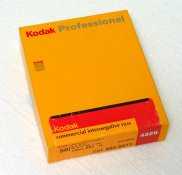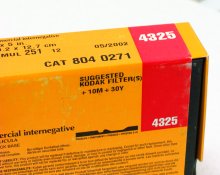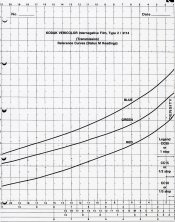Velvia is a pain in the butt to make internegs from. And you probably won't like my answer. What I have successfully done is to make a masked contact dupe with modified tonality onto 8x10 Astia 100F (which in itself was a fairly complicated procedure require multiple masks), and then via this, make a Portra 160 contact interneg. The basic problem is the inherently high contrast of Velvia and edgy nature of its dyes, particularly in relation to saturation. Porta has trouble corresponding to these directly. It's easier to make an interneg from one of the more ordinary chrome films, but even then, contrast masking skills are quite valuable. But internegs are a backburner project for me because I have so many original color negs to choose from too, and really not enough time to print color much at all at the moment.















